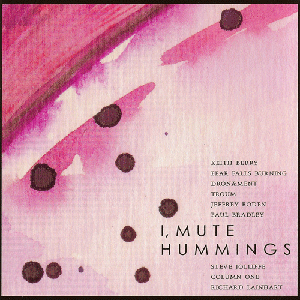

Richard's studio. Photo: David Mattingly
Richard's track "White Nights (remix)" closes out this compilation of "dense drones and dulcet atmospheres".
Essentially, "White Night" is an outwardly simple and fluent piece with a degree of inner complexity which prevents it from slipping to the background: "The piece consists of a dense, continuous four-note chord, each note in the chord recorded in a separate pass to one track on a Scully 4-track studio recorder", Richard Lainhart explains, “Each track consists of a single sine wave oscillator which is frequency modulated by a group of eight additional sine wave oscillators. Those oscillators are all tuned to different tones, each harmonically related to the fundamental chord tone."
Therefore, the musical action does not necessarily take place in the center, but in the harmonics: Richard Lainhart: "The result is a continuously-changing complex harmonic waveform (...), generating a continuously-changing complex timbre based on the fundamental pitch of the note."
— Tobias Fischer, Tokafi
Richard Lainhart: Pre-Eno Ambient piece rediscovered after 30 years
Discography: These Last Days │ Ten Thousand Shades of Blue │ I, Mute Hummings (compilation) │ White Night │ Lux │ Luminous Accidents │ Cranes Fly West │ The Wave Sounding Sea/The Course of the River │ Polychromatic Integers │ An Abandoned Garden │ NEW! – Modulisme Session 101

I, Mute Hummings (Compilation) (2006)
I, Mute Hummings available from Ex Ovo (EX001)
Finally, Moog pioneer Richard Lainhart contributes a remixed excerpt from his gorgeous 1974 drone piece "White Nights", which manages to suggest both Tony Conrad's violin overtone marathons and the tape loop section from "Close To The Edge". I know that's the second Yes reference in this interview, but it really does. — Keith Moline, The Wire, March, 2007